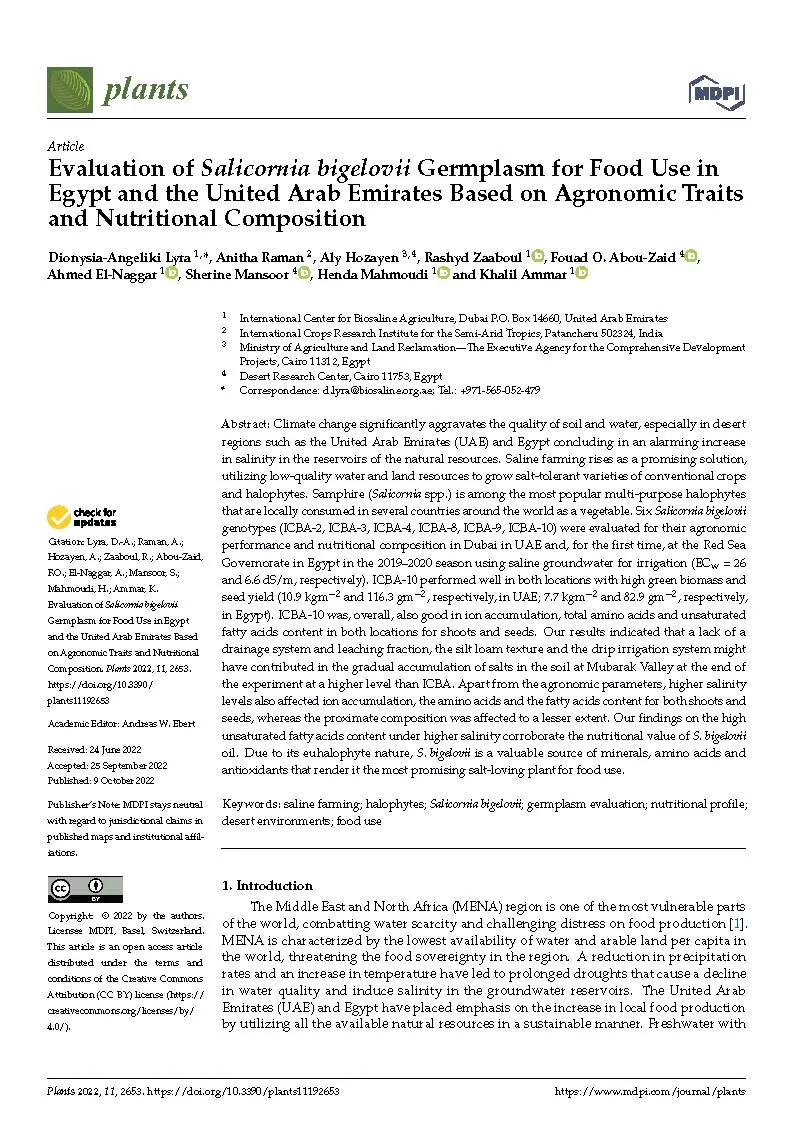Evaluation of Salicornia bigelovii Germplasm for Food Use in Egypt and the United Arab Emirates Based on Agronomic Traits and Nutritional Composition
Climate change significantly aggravates the quality of soil and water, especially in desert regions such as the United Arab Emirates (UAE) and Egypt concluding in an alarming increase in salinity in the reservoirs of the natural resources. Saline farming rises as a promising solution, utilizing low-quality water and land resources to grow salt-tolerant varieties of conventional crops and halophytes. Samphire (Salicornia spp.) is among the most popular multi-purpose halophytes that are locally consumed in several countries around the world as a vegetable. Six Salicornia bigelovii genotypes (ICBA-2, ICBA-3, ICBA-4, ICBA-8, ICBA-9, ICBA-10) were evaluated for their agronomic performance and nutritional composition in Dubai in UAE and, for the first time, at the Red Sea Governorate in Egypt in the 2019–2020 season using saline groundwater for irrigation (ECw = 26 and 6.6 dS/m, respectively). ICBA-10 performed well in both locations with high green biomass and seed yield (10.9 kgm−2 and 116.3 gm−2, respectively, in UAE; 7.7 kgm−2 and 82.9 gm−2, respectively, in Egypt). ICBA-10 was, overall, also good in ion accumulation, total amino acids and unsaturated fatty acids content in both locations for shoots and seeds. Our results indicated that a lack of a drainage system and leaching fraction, the silt loam texture and the drip irrigation system might have contributed in the gradual accumulation of salts in the soil at Mubarak Valley at the end of the experiment at a higher level than ICBA. Apart from the agronomic parameters, higher salinity levels also affected ion accumulation, the amino acids and the fatty acids content for both shoots and seeds, whereas the proximate composition was affected to a lesser extent. Our findings on the high unsaturated fatty acids content under higher salinity corroborate the nutritional value of S. bigelovii oil. Due to its euhalophyte nature, S. bigelovii is a valuable source of minerals, amino acids and antioxidants that render it the most promising salt-loving plant for food use.
